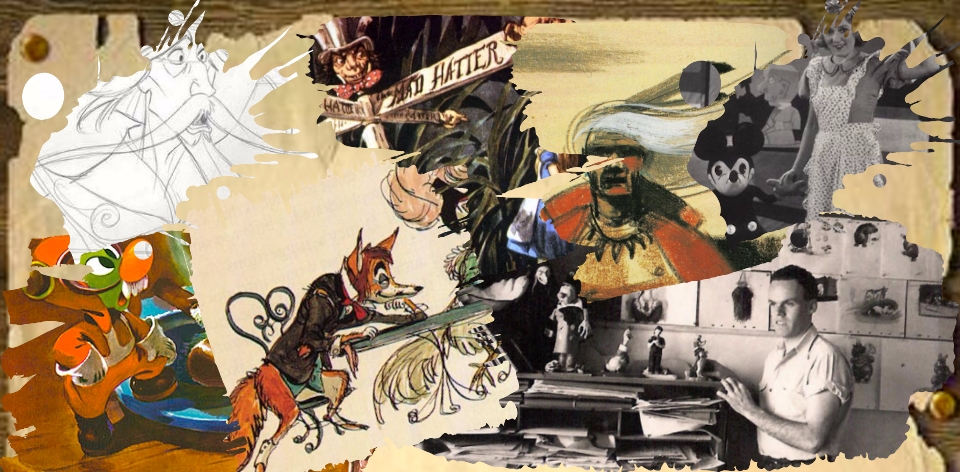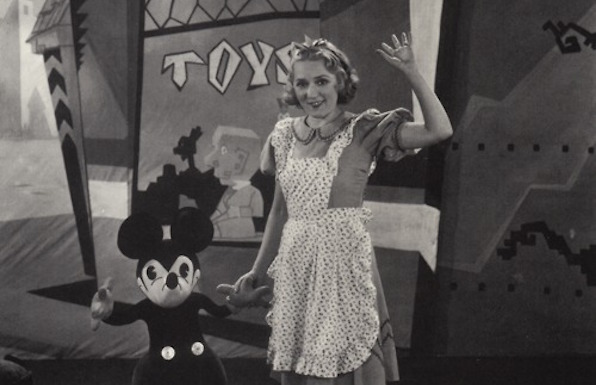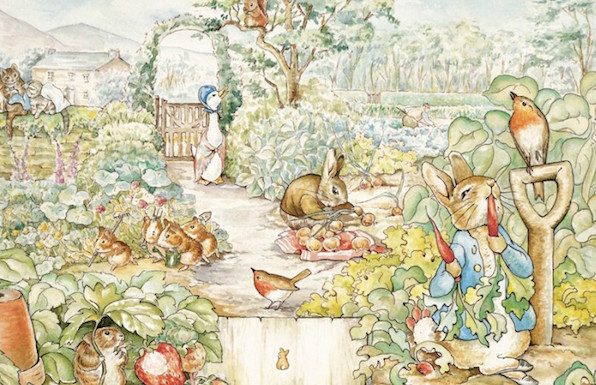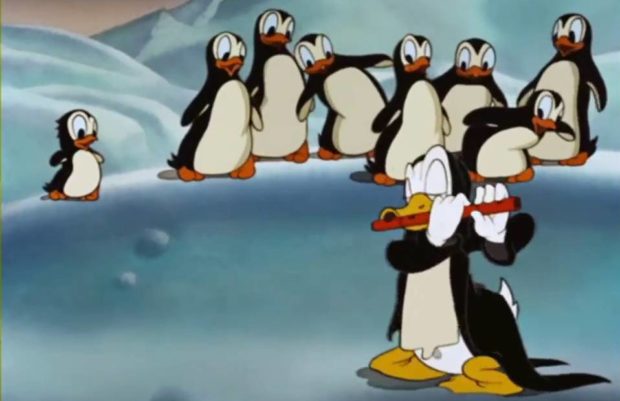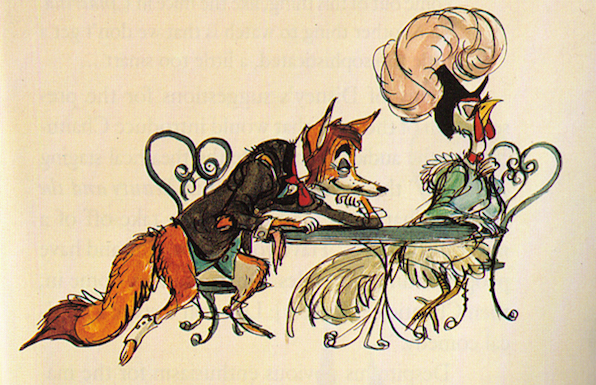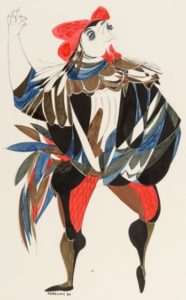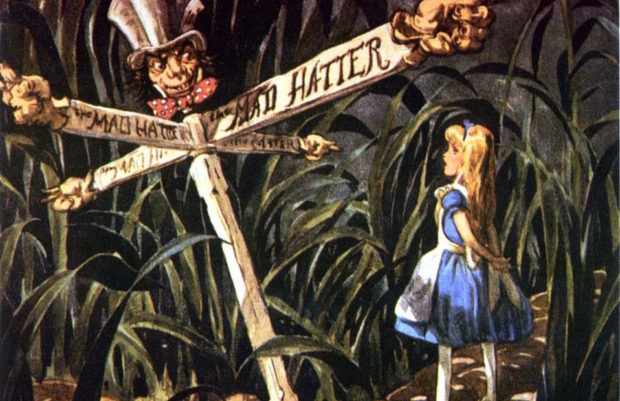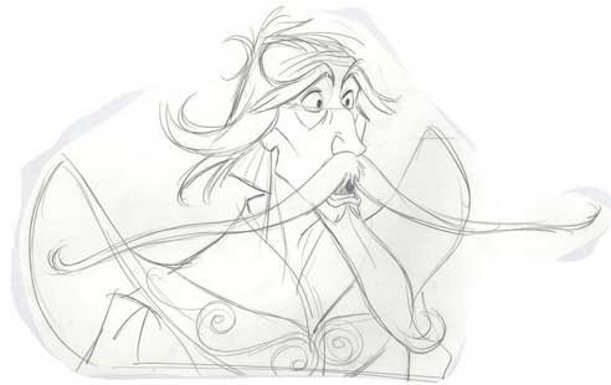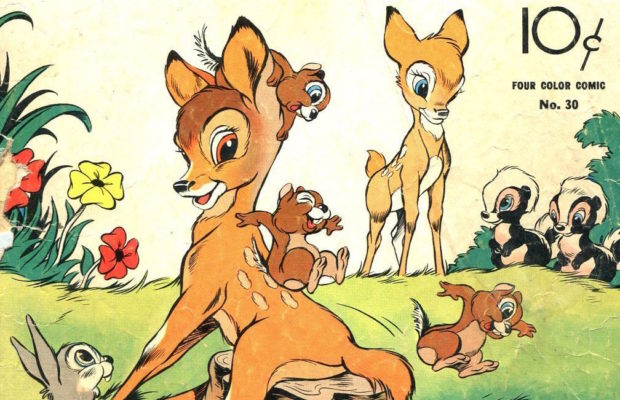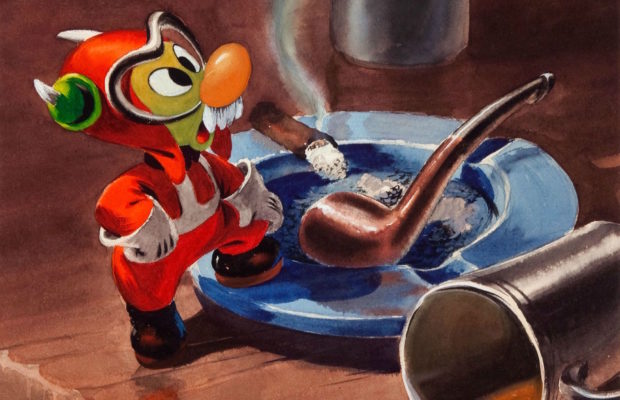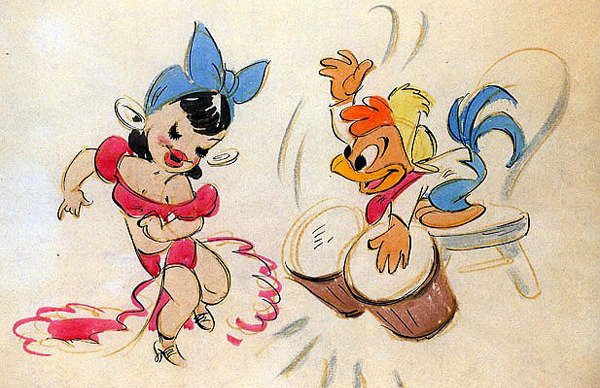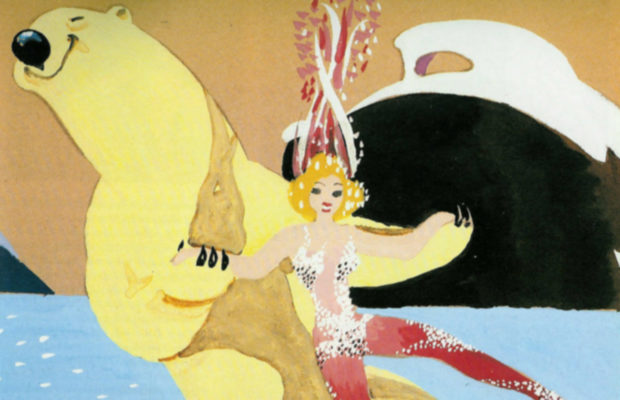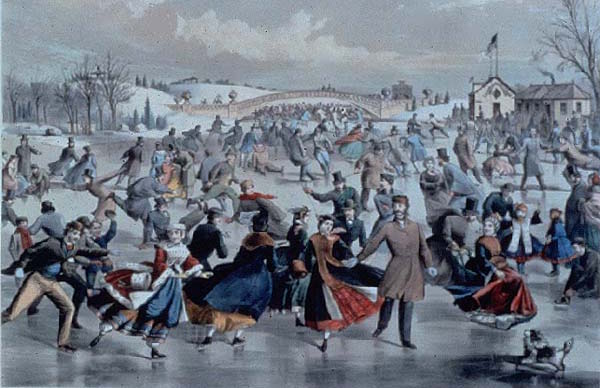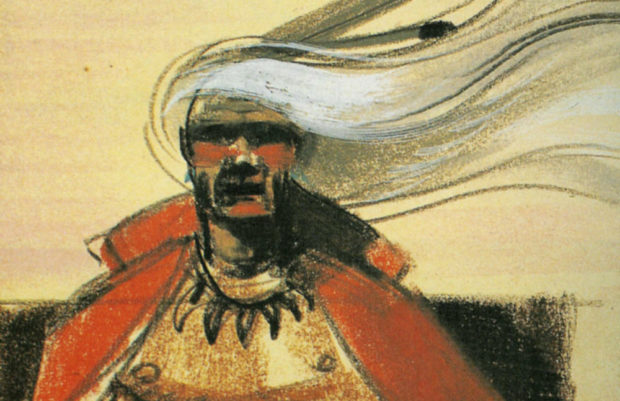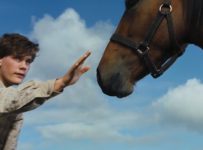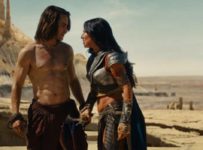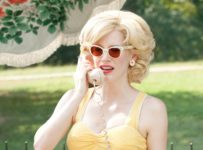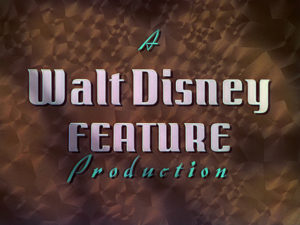 The term “Disney Animated Classics” is one that the House of Mouse has given to itself, a way of describing the 56 films (and counting) that have primarily come out of the Walt Disney Animation Studios since their first feature in 1937.
The term “Disney Animated Classics” is one that the House of Mouse has given to itself, a way of describing the 56 films (and counting) that have primarily come out of the Walt Disney Animation Studios since their first feature in 1937.
What started with “Disney’s Folly” of Snow White and the Seven Dwarfs in the 1930s grew to incorporate new technologies, songs, and worldwide audiences over the next 80 years. Yet not every idea from the Magic Kingdom came to life in this time.
Disney sometimes had a rocky road after their first few successes. Fantasia (1940) was unable to make a profit due to the Second World War cutting off distribution to the European market. The war also led to other budgetary constraints, with Walt and company opting not to make features in lieu of “package” or “combination” films: that is, collections of shorts sold as a feature. This continued right up until the late 1940s, with Fun and Fancy Free (1947) originally conceived as two separate features. The same is true of The Adventures of Ichabod and Mr. Toad (1949).
In the first part of this series, we look at Disney’s planned features prior to Snow White, multiple attempts to get features based on Chanticleer, Alice in Wonderland, and Don Quixote off the ground, The Gremlins and more!
Alice in Wonderland (1933)
Wait a minute, we hear you think. Didn’t Disney make this? Several times? A little bit of Disney trivia is that Walt Disney attempted to bring this to the screen 18 years earlier. Alice would have been a hybrid film, mixing star Mary Pickford with animated elements, much as Disney had done with their Alice Comedies of the 1920s. Disney scrapped this film in favour of Snow White and the Seven Dwarfs, the film that went from being “Disney’s folly” to their first full-length animated film. Paramount also wound up making a live-action Alice in Wonderland in 1933. Disney would next try in 1939 (see below).
Peter Rabbit (1936)
In 1936, Walt made an offer to adapt Beatrix Potter’s classic stories. Potter refused. While Disney’s negotiations with P.L. Travers over Mary Poppins are legendary, and served as the basis for Saving Mr. Banks (2013), we can only hope to hear more of this tale in time.
Penguin Island (1938)
Decades ahead of the massive success of Happy Feet, this strange concept was about a partially blind Christian monk who finds himself on an island and mistakes the great auks for people and baptises them. It’s no surprise this flightless bird didn’t make it off the ground, but penguins did make it into the Donald Duck and Goofy short Polar Trappers that same year. Fun fact: the unrelated ;Disney Club Penguin Island became a popular MMORPG in 2017.
Chanticleer/Reynard the Fox/The Romance of Reynard (1940s – 1960s)
This is one of those projects that various people at Disney tried to get off the ground for decades. First turning up after Snow White, the idea was to adapt the medieval tales of Edmond Rostand’s Chanticleer the boastful rooster. Ted Sears and Al Perkins first brought this to Walt, but struggled to make the rooster (who believed the sun rose at his command) sympathetic. Walt’s idea was to combine it with Reynard the sly fox, another idea the animators were working on, but it was ultimately shelved during the onset of the Second World War. Years later, animators Marc Davis and Ken Anderson made another attempt in the 1960s, but the project was again shelved, this time in favour of the cheaper The Sword in the Stone. Several songs – including “You No Good Reynard” and “Yesterday is Over” – were even written by George Bruns and lyricist Mel Leven. Some character designs wound up in Robin Hood (1973).
The Wizard of Oz (1939)
Walt Disney had originally planned to follow-up Snow White with the The Wizard of Oz in 1939, but MGM already had the rights and Disney’s plans went somewhere over the rainbow. Disney would later make the live action Return to Oz, Oz the Great and Powerful…not to mention a Muppets version.
Alice in Wonderland (1939)
Disney’s second crack at Alice actually saw Walt file the film’s title with the Motion Picture Producers and Distributors of America and hiring storyboard artist Al Perkins and art director David S. Hall. A story reel was developed, but two things stopped it coming to fruition: high production costs on Pinocchio, Fantasia, and Bambi, and something called the Second World War.
Don Quixote (1940s – 2000s)
Terry Gilliam was not the first to fail at making this film. Despite being in development four times between 1941 and 2001, it never came to life. Jim Hill recounts the long journey in an excellent article over at Jim Hill Media. Like most productions around this time, Bob Carr’s initial work was derailed by the war initially, but so was a second crew under Jesse Marsh in 1946, and a third production in 1951. Off the back of their work in Hunchback of Notre Dame, animators Paul and Gaetan Brizzi had another attempt in the late 1990s, but couldn’t decide on the adult tone for the film. As recently as 2012, Disney were still working on a pitch for a movie from Jeff Morris and writer-director Steve Pink. With the forthcoming release of Disney’s streaming service, it is now said to be a live-action adaptation of Cervantes’ novel, with a screenplay written by Billy Ray (The Hunger Games).
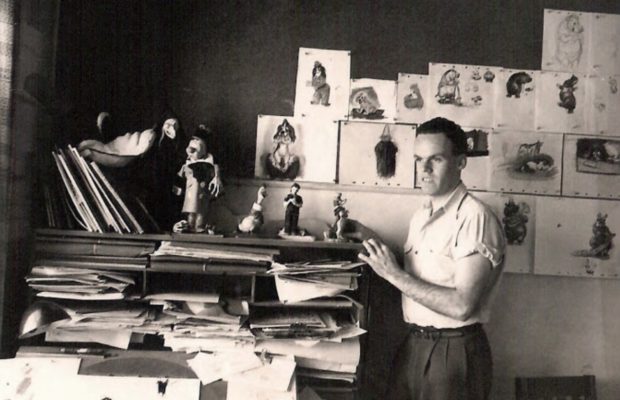
Bob Jones in Joe Grant’s office. Grant’s Inspector Bones art surround him. Photo: David Lesjack/They Drew as They Pleased.
The Hound of Florence/Inspector Bones (1941)
Based on the novel by Bambi author Felix Salten, this is one of those ideas that didn’t get much further than the literal drawing board. An oddity for the era, it was said to be designed around a series of Tex Avery style gags that would be incredibly self-referential. Disney certainly wasn’t doing much of this in the early 1940s, so this is perhaps why it got shelved. All was not lost though: Salten’s book would inspire, and even be mentioned in, the 1959 Disney live-action hit The Shaggy Dog. Disney would continue to use the property over the years, with two sequels and a pair of remakes in the 1994 and 2006.
The Ostrich Who Laid the Golden Egg (1942)
This one is a little bit of a mystery, but notes indicate that it would answer the question “Where did you come from?” According to They Drew As They Pleased Vol. 3, James Bodrero was allegedly at work on this as a “gaucho” project, in the vein of package film Saludos Amigos, one of the South American collaborations at Disney. Yet Disney still had golden eggs on their mind: the Donald Duck short Golden Eggs was released in 1941, and The Million Dollar Duck was released as a live action flick in 1971.
Bambi’s Children (1943)
One of the first sequels considered by Disney, it never made it to production. However, Dell Comics adapted Salten’s sequel in 1943. If you’ve kept an original copy of this, some sources estimate that the issue can go for well over $1000 US. Disney would eventually make Bambi II in 2006 by way of the Australian office of DisneyToon Studios and released it as a direct-to-video title. Fun fact: it was the last Disney animated film to be released on VHS.
The Gremlins (1943)
Possibly one of the most famous of Disney’s unproduced animated films. Originally intended as an original story by R.A.F. Flight Lieutenant Roald Dahl – who would later become a little more famous for Charlie and the Chocolate Factory, Matilda, and more – it instead became the writer’s first children’s book. The story was about the gremlins who wrecked airplanes during the war. It never made it to the screen, but it was still published as a book to coincide with the planned release. The Bugs Bunny short Falling Hare came out the same year with a similar presence. Dark Horse Comics later republished it as a restored The Gremlins: The Lost Walt Disney Production, and the characters appeared in the Epic Mickey video games.
Carnival Surprise Package/Cuban Carnival (1946)
A planned third entry in the South of the Border package film series, and a follow-up to Saludos Amigos and The Three Caballeros. Disney had stopped making single narrative feature films at this time due to the costs and the toll of the recent war. Fun and Fancy Free (1947), for example, was originally planned as two separate features. Segments would have included “Brazilian Rhapsody,” which later became “Blame It On the Samba” in Melody Time (1948), “The Laughing Gauchito,” “San Blas Boy,” about a boy named Chico lost in a storm with his dog Kiki, the surrealist “Cape Dance” and some more time with Donald, José, Miguelito Maracas
Sonja Henie Fantasy (1946)
This is one of the more esoteric entries on the list. Proposed as either a feature or a short intended for a Fantasia follow-up, it was (as the title implies) a fantasy film built around the famed world champion ice-skater Sonja Henie. The skater was one of the highest-paid stars in Hollywood at the time, with a string of hits under her belt. Having said that, it’s probably a good thing Disney didn’t go through with this, and it’s doubtful it would have had the cultural longevity of its contemporaries. That said, an animated Henie did make her way to the Disney short The Autograph Hound (1939), which was also the first time Donald Duck wore his blue sailor hat!
Currier and Ives (1949)
Another planned package film based on the famous lithographic paintings from the Currier & Ives firm. This early pop-cultural icon never made it past the planning stages due to the high production costs, and the prolific number of combination films that Disney had released to diminishing returns. The Adventures of Ichabod and Mr. Toad came out that year instead, combining another American icon (The Legend of Sleepy Hollow) and The Wind in the Willows. It was the last package feature Disney would release until 1977’s The Many Adventures of Winnie the Pooh.
Hiawatha (1949)
While Disney had previous made a cutesy short feature called “Little Hiawatha” featuring the origins of the co-founder of the Iroquois Confederacy. The production edict was said to follow Fantasia’s “artistic but contradictory” credo, but that was ultimately its undoing. Deemed to be too “highbrow” (according to Mental Floss) for audiences, the reverential tone and colour palette eventually made their way into Pocahontas almost five decades later. Disney would instead choose Cinderella to usher in the 1950s, taking them back to European fables and fairy tales for the moment.
In the next part, covering 1951 through 1991, we’ll look at Mickey Mouse in The Emperor’s Nightingale that never was, a series of fairy tales that were lost to the Disney Vaults, Nazis attempting to capture apes in Scruffy, the epic Musicana, a Roger Rabbit sequel, and a whole lot more as Disney rises, falls, and sings its way into a a second renaissance.

